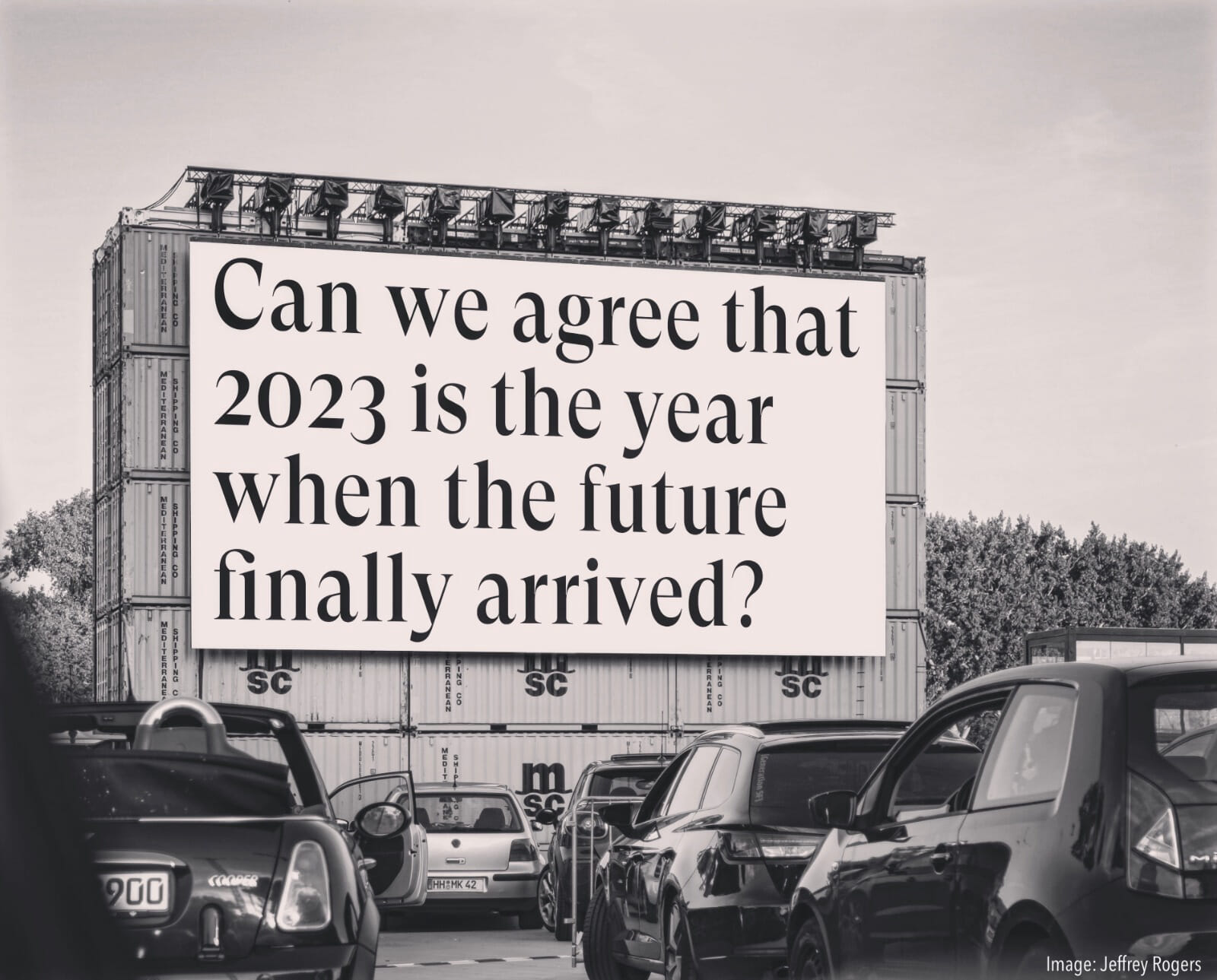Dec 19, 2023
It’s that time of year, friends. Looking forward, looking back, all of that. But I don’t have a trend report for you (although if you’re looking for, well, all of them… they’re collected here by the dozen – and explorable here via a custom GPT), and this isn’t exactly a year-in-review essay looking back with scorecard in hand on all our forecasts of yore either.
Instead, I’m interested in revisiting one particular meta-forecast that we made here for 2023 way back in January. In a piece posted on Jan 17, we argued that 2023 “held the prospect of being the year when we finally recognize that the future—or at least significant elements of the futures we envisioned throughout the 2010s—has arrived.”
With the year now almost fully in the books, this argument feels correct to me. Personally, this was the year when I meaningfully integrated a conversational AI assistant into many of my workflows and the year when I (and a number of friends also residing in Austin, TX) strategically left town for a stretch to avoid an increasingly common pattern of truly extreme summer heat. Zooming out from my own experience to survey the larger landscape, we can see that tech analysts of 2023 were able to point to strong evidence in one domain after another that the futures many of us had long anticipated were no longer hypothetical tomorrows or abstractions-on-the-way: they had become the world of our present.
Covering the first ever approval of a CRISPR medicine last month (following a wildly successful trial targeting sickle-cell disease), The Atlantic proclaimed that “the CRISPR era is here.” Just a month before that, AI researchers Blaise Agüera y Arcas and Peter Norvig argued in Noema that “the most important parts of [AGI] have already been achieved.” And way back in June, MIT Tech Review pointedly announced that “robotaxis are here. It’s time to decide what to do about them.”

Having spent a good chunk of the 2010s at an organization that was in the business of researching and forecasting precisely these technological futures, I’ve had the sense that this year marked enough milestones to indicate some significant shift from envisioning to experiencing, anticipating to adapting. The difficult truth, of course, is that to thrive in the future as it unfolds, we’ll have to learn to do both well at the same time – to continue anticipating what might be while we’re adapting to what already is.
I was thinking of this dual challenge/opportunity a few weeks ago when Pascal & I were in Las Vegas for Digital CPA 2023. Remarking on AI during his speaker session, Pascal pointed out to the hundreds of assembled leaders that the tools and systems their profession had been anticipating (or fearing) for years were no longer on the way. They had largely arrived. The question, then, for the leaders and their firms was what would happen next. How would they at once use those tools to update practices, capabilities, and value propositions (adapting) while also pushing themselves to think beyond a near-term future vision that was rapidly becoming the present to see new future possibilities and opportunities for relevance in the long term (anticipating)?
For any of us who might be feeling like this year has marked an inflection point of sorts, I’ll suggest that we’re facing a version of that same question. And in this last essay of the year, I’ll return to another point we made in the first: The word inflection comes to us from the Latin inflectere which can also mean “to bend inward.” Perhaps in this season of looking forward and looking back, we can also take some time to look inward and ask ourselves just what, if the future has indeed arrived, we want to do about it in 2024 – as individuals, as organizations, and as a society. @Jeffrey